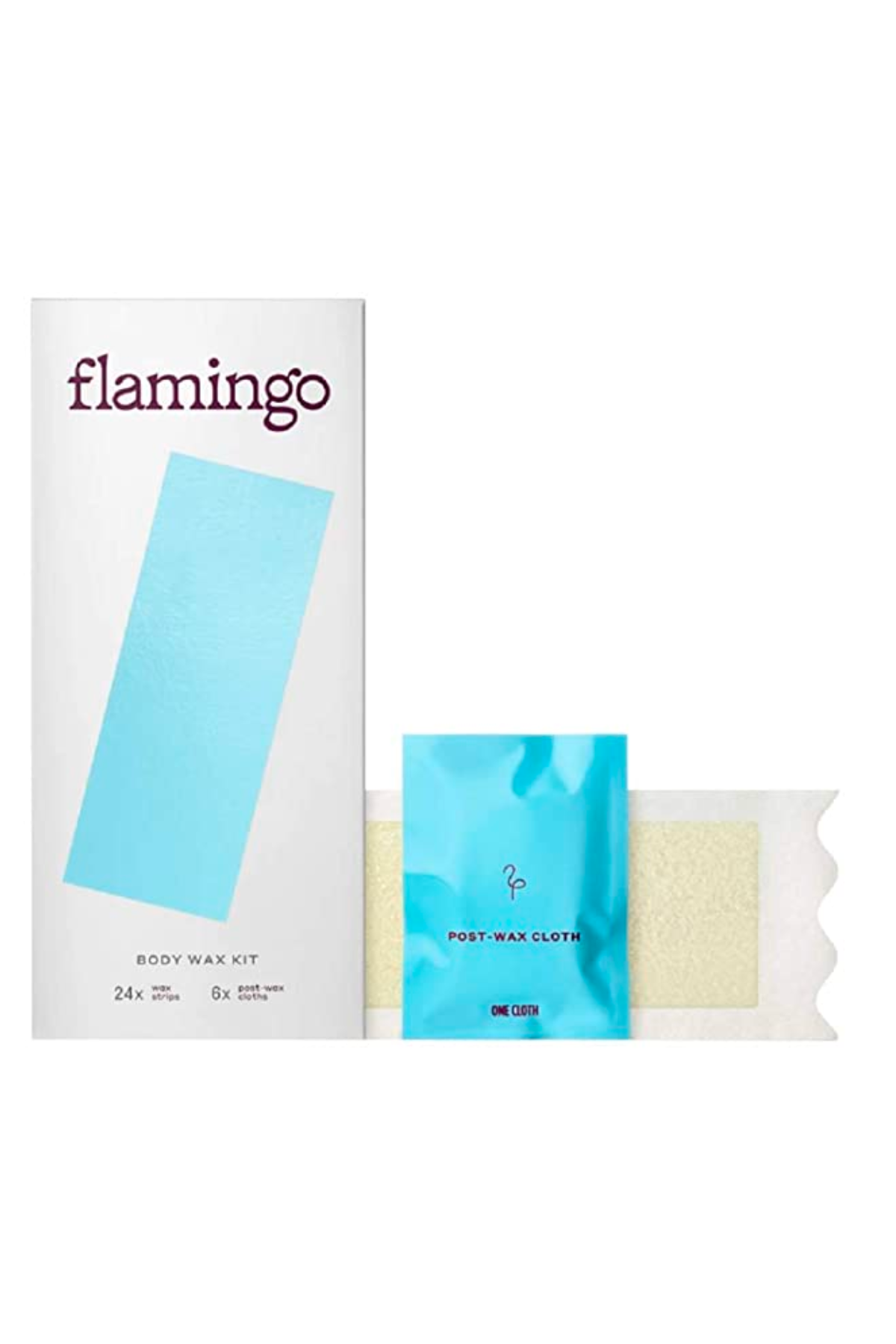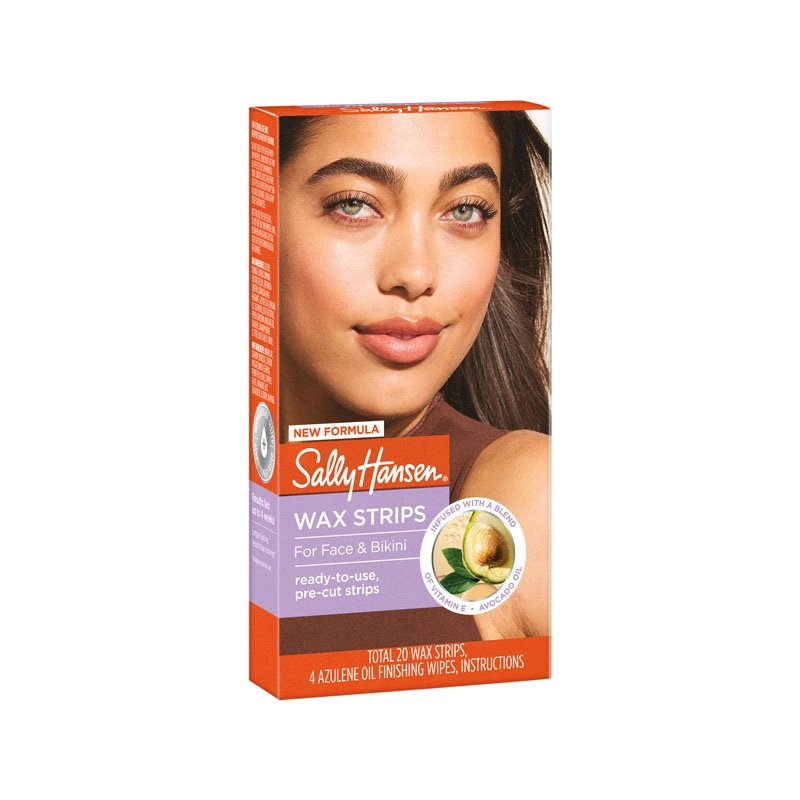How To Use Wax Strips for Baby-Smooth Skin, According To a Dermatologist
Your step-by-step guide to becoming hair-free.

Julia Marzovilla
When it comes to hair removal methods, I've tried almost every DIY option out there. Some of the most popular ones, like at-home laser hair removal, come with a learning curve and require investing in an expensive new device. Other options, like at-home waxing kits, require less knowledge upfront but can still be painful and messy. My current hair removal journey: learning how to use wax strips.
I've had a couple of nasty in-salon waxing experiences in the past. (Think: full-arm rashes that lasted days and an upper lip covered in a ruddy rainbow of pimples.) However, I've been looking to broaden my hair removal horizons and, after thorough research and talking to a handful of board-certified dermatologists, am confident that using wax strips to remove body hair is both a safe and effective option.
Still, there's much to know before ripping my hair off my body with a tacky adhesive. I want the best possible, pain-free results, so I'll need to find the most effective products, prep my skin correctly (exfoliation is key), and follow up with nourishing aftercare.
Ahead, dermatologists and experts in the field answer all of my most important wax strip questions and recommend their favorite products for a totally smooth experience—pun intended.
What Are Wax Strips?
Unlike at-home waxing kits that require heating, wax strips are a pre-packaged, pre-cut, and don't require more than your body's natural heat to work. "They remove hair from the follicle completely and therefore reduces the frequency of hair removal," explains board-certified dermatologist Saami Khalifian, M.D. FAAD.
The benefit, explains Dr. Khalifian, is that wax strips can even be less stressful on the skin than shaving in some cases. "Shaving can also lead to irritation like razor burn, cuts, and ingrown hairs, which waxing might help people avoid." Plus, it's a more affordable alternative to something like laser hair removal or professional waxing.
How To Use Wax Strips
While every set of strips is different and comes with its own directions (which you should most definitely follow), there are some general good practices when it comes to waxing at home. Below, our dermatologists and Maria Desmarais, co-founder and co-CEO of Athena Club, outline some easy steps to follow.
Get exclusive access to fashion and beauty trends, hot-off-the-press celebrity news, and more.
Step 1: Prepare Your Skin
According to Dr. Khalifian, prepping the skin is vital to using wax strips. "Cleansing and gentle exfoliation before waxing ensures the wax will have easy access to the hair shaft and decreases the risk of introducing bacteria into the skin," he explains. Skin should also be fully dry (emphasis on fully) and free of sweat or other products like body lotions before you start.
Desmarais recommends doing a patch test and “waiting 24 hours to ensure you don’t experience any irritation before waxing a larger area.”
Step 2: Prepare Your Wax Strips
This is the waxing process's easiest part. Desmarais says the wax should be “even on both sides” before it's applied to the skin. Look for wax kits that don't require you to heat up your own wax. You'll typically have to remove an adhesive strip to expose the wax bed.
Step 3: Apply the Wax Strip To the Skin
Apply the wax strips in the “same direction as hair growth and smooth the wax strip with your hand to ensure it’s sticking to the skin,” says Desmarais. He suggests smoothing the wax strip out with your hand to make sure that it’s applied correctly and that all of the wax is in direct contact with the skin.
Step 4: Remove The Wax Strip (And The Hair)
Just like pulling off a Band-Aid, it’s important to remove the strip in one go. While your non-dominant hand keeps the skin taut, use your dominant hand to “pull the strip in the opposite direction of hair growth," according to Desmarais.
Keep your hand close to the root of your hair for the cleanest results. If you don’t move fast enough, the wax may stay on the skin, and your hair won’t be removed properly. Skin tears are often caused when you wax the same section of hair more than once, so it's imperative to get most of your hair with one pull.
The Best Wax Strips
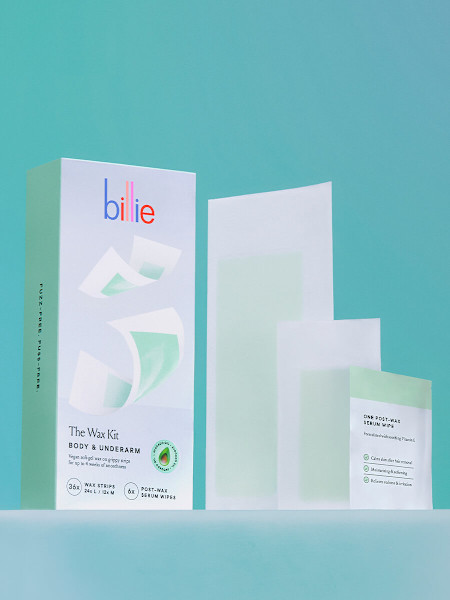
Billie's kit is easy-to-use, safe for sensitive skin, and essentially fool-proof. And if you're worried about heating up your wax, don't be. These strips can be applied and ripped off whenever you're ready —no flames or extra rubbing required.
Where Can You Use Wax Strips?
Board-certified dermatologist Kenneth Howe, M.D. FAAD, says that wax strips can be used almost anywhere on the body, including your bikini line, armpits, legs, or face. That said, you should look for wax strips specifically designed for the areas you will use them.
He adds that most problems arise from using them “around the mouth and eyes, where the skin is thinner and more prone to tearing."
How Long Should Your Hair Be for Wax Strips to Be Effective?
Unlike a razor, which can catch many lengths of hair, wax strips require hair to be a certain length to be effective. “This sweet spot is six millimeters, or about the length of a grain of rice,” says Dr. Howe. If the hair is shorter than that, the wax fails to grab the hair. If the hair is longer than six millimeters, the hair shafts often break instead of being pulled out at the root.
While he notes that everyone’s hair grows at different rates, it generally takes about two weeks for your hair to get to the correct length.
Are Wax Strips Safe?
The wax strip kits with wax already on them and "soft gel" claims (this means they function without much heat) are safe to use at home. Other wax kits that require you to heat up your own wax, however, might not be as safe and should be left to a properly trained esthetician.
With that in mind, using wax strips comes with a few risks. “Tearing the skin is the most common problem,” says Dr. Howe. “People with sensitive skin are more prone to this issue, but it can happen with a disturbing randomness—as in, after you've used it several times without problems, you suddenly get unsightly skin stripping just before a vacation.”
There are plenty of steps you can take to avoid this from happening. Dr. Howe recommends you “do not re-wax if a first stripping leaves behind a few stray hairs.” Yes, being completely hairless is always the goal, but do not repeatedly run the same wax strip over the same section of your body. “Having already done one wax stripping, the stratum corneum (the outermost layer of your epidermis) is already temporarily thinned—because waxing exfoliates off some stratum corneum along with the hairs—so you’re too vulnerable at that point to risk a second stripping,” he says.
How to Take Care of Your Skin After You Wax
While you might experience some redness after you finish using your wax strip, just know it's “absolutely normal and may last for a few hours," says Desmarais. Instead of panicking, just focus on restoring hydration and calming the skin.
Some waxing kits, like Athena Club On The Spot Wax Strip Kit for Face, come with products to soothe redness or irritation. However, you can always use skincare you have on hand. Dr. Khalifian suggests using gentle products to help bring irritation down and support the skin barrier. "Generally topicals with ceramides and other lipids can help restore the skin barrier, and hyaluronic acid can increase hydration to help calm and soothe the skin," he says.
He also notes that it is a good idea to avoid hot showers, excessive sun exposure, and tight clothing that might rub and irritate the skin for the next 24 hours. You'll also want to skip deodorants and alcohol-based products to minimize potential irritation.
If you do experience lasting pain or discomfort, Desmarais recommends applying a cold compress to the area. If it doesn't subside within a few days, consult your dermatologist.
When Should You Not Use Wax Strips?
Dr. Howe says that you should never use wax strips on any area that has an active infection, either bacterial (think: a staph infection) or viral (like a cold sore), because waxing can spread infections in some cases.
"People with sensitive skin or a history of numerous contact allergies should probably avoid using wax strips," Dr. Khalifian says. "Those with eczema, psoriasis, open wounds, or topical retinoids should also generally tread lightly or avoid altogether."
Finally, Dr. Howe says that you should never wax if you’re using medications like Accutane. “The medication leaves the stratum corneum temporarily thinner, and so waxing while you're on the medication can cause large, deep skin tears,” he says, noting that “skin remains fragile for a month after stopping the medicine.”
My Wax Strip Review
I'm a skeptic about waxing in any setting. But I could be a convert after taking a chance on Billie's The Wax Kit Body & Underarm. I started with my arms, one of the less sensitive areas on my list.
Billie's strips are good to go straight out of the box, so there was no need to worry about heating wax to the proper temperature. I started off by cleansing my skin per the dermatologist's advice, then I got to work. Each box comes with 36 wax strips and six post-wax serum wipes, which was more than plenty to tackle both my forearms. I laid each strip onto my skin, rubbed until the wax adhered closely to the hair, and then pulled in the opposite direction of the hair's growth as the pros suggested.
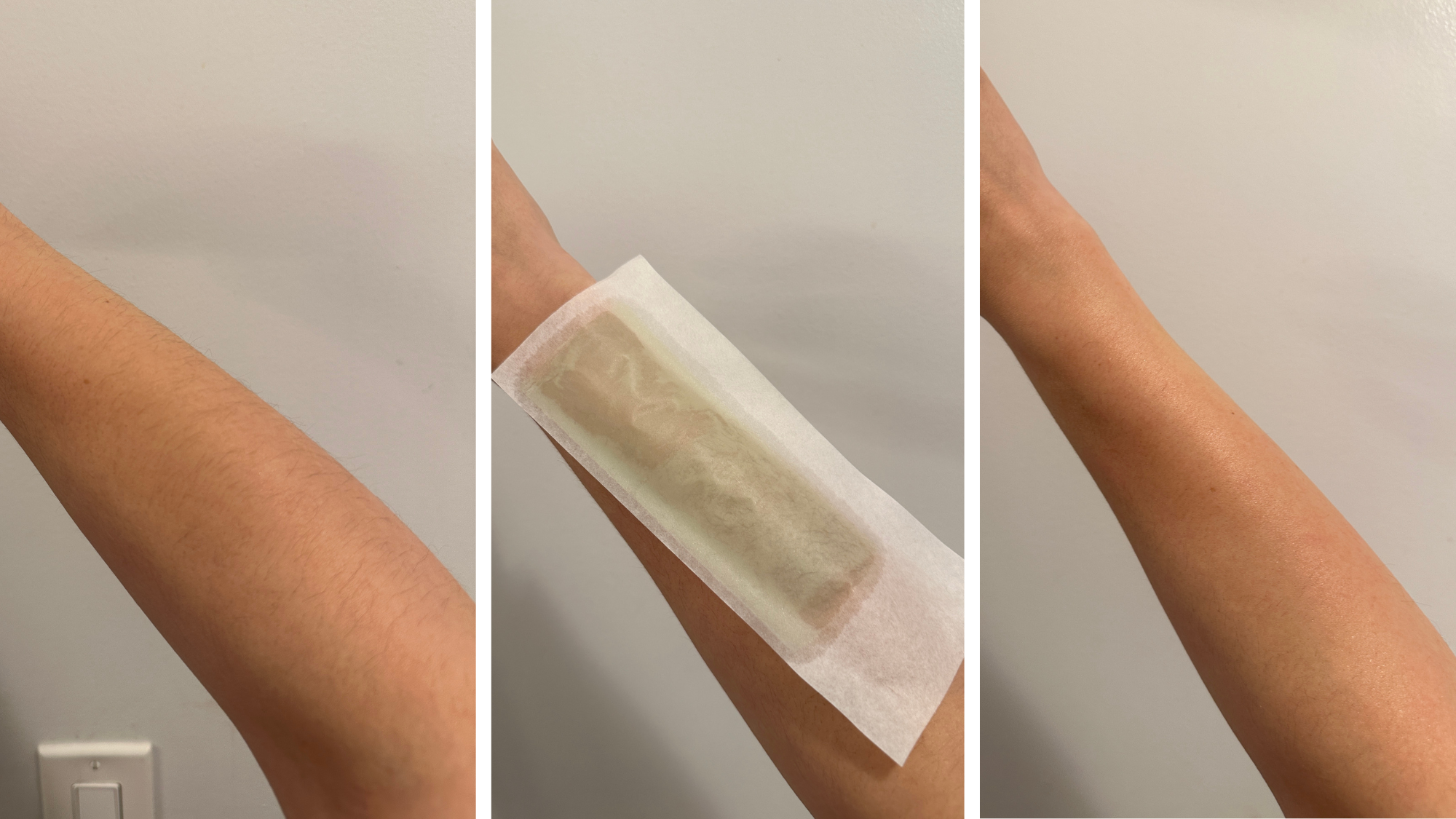
Taylore Glynn uses Bilie's The Wax Kit Body & Underarm.
Each strip can be used three times, and I was surprised how much hair came off onto each strip given the wax wasn't heated in advance. The removal also didn't hurt nearly as much as I'd anticipated; after each quick rip, no residual burn remained.
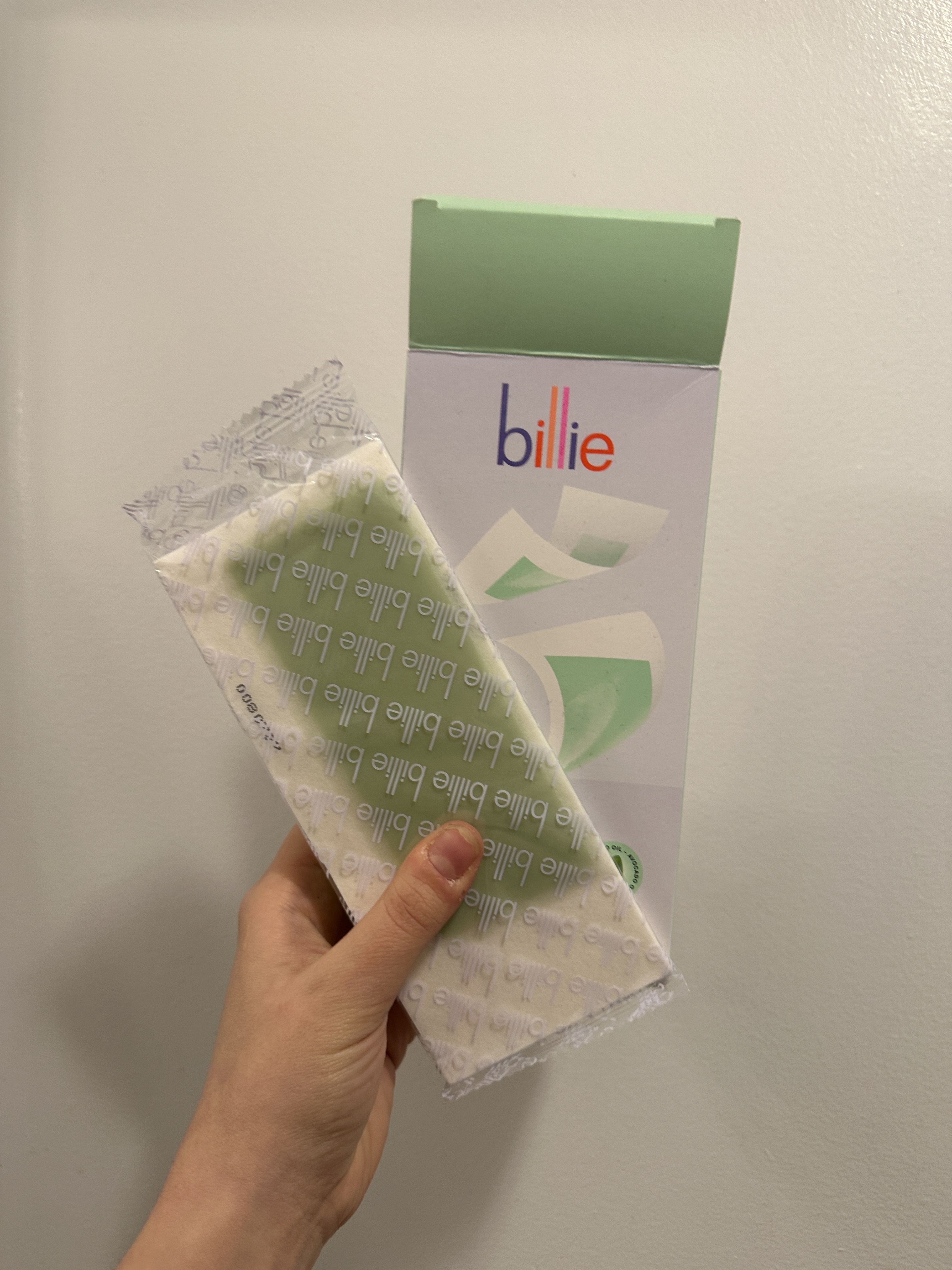
Each box comes with 36 wax strips.
In under 10 minutes, both my forearms were bare and baby-smooth. I used the kit's soothing wipes to remove the residual wax, leaving my skin hydrated and stickiness-free. Though my skin was slightly pink post-wax, any leftover redness disappeared over the next couple hours. Thankfully, I have plenty of strips leftover, and will be reaching for them the next time I don't have the spare minutes to hop in the shower and shave.
Why Trust Us
Marie Claire is an expert in hair removal, having covered topics ranging from the best waxing kits to the best razors and an essential guide to sugaring. Taylore Glynn is a freelance writer and contributor with nearly a decade of experience in the space. She has sensitive skin, and has tested waxing kits firsthand to determine their efficacy. We also spoke with two dermatologist and a hair removal expert about how to use waxing strips for this particular story.
Meet The Experts

As a cosmetic dermatologist, Dr. Howe is known for his light touch. He believes that smaller, earlier interventions allow patients to maintain a youthful appearance while at the same time preventing or slowing further aging. Calm and reassuring in manner, Dr. Howe is an expert in guiding patients through the variety of available options, from the simplest topical agents to cutting edge procedures. He values maintaining an open dialogue between doctor and patient throughout this process.
The goal of all aesthetic treatments, in Dr. Howe’s view, is to achieve and maintain a completely natural look. What is done must be dictated in each case by careful study of the anatomy and structure of the individual face. This approach is particularly noteworthy in Dr. Howe’s use of injectable fillers and toxins, of which he is a recognized expert.

Maria Desmarais is the Co-Founder and Co-CEO of Athena Club. Prior to co-founding the company in 2018, she worked for management and strategy consulting firm, McKinsey & Company, where she served as a Business Analyst. After spending two years in the corporate world, she left to follow her dream of transforming the personal care industry and created Athena Club, the first modern CPG company which offers consumers a way to get better quality self-care essentials more conveniently.Maria earned her B.A in Political Science from Columbia University. Since launching Athena Club, she has received a number of accolades including being named a Forbes 30 Under 30 recipient in retail and ecommerce (2019).

Dr. Saami Khalifian, a double board-certified dermatologist and Mohs micrographic surgeon, is acclaimed for his leadership, innovation, and expertise in the field of dermatology and aesthetic medicine. With a distinguished background including Harvard and Johns Hopkins, Dr. Saami seamlessly integrates cutting-edge scientific methods with compassionate attention, delivering comprehensive solutions and unwavering commitment to patient care.
Taylore Glynn is a former beauty and wellness editor for Allure. Previously, she served as beauty and health editor at Marie Claire and Harper’s Bazaar, and her work has appeared in Refinery29, Town & Country, Compound Butter, and RealSelf. She holds a master's degree in English and Creative Writing from Monmouth University. If you need her, she’s probably at the movies, braising a chicken, or evening out her cat eyeliner.
- Julia MarzovillaFashion E-Commerce Editor
